Here’s a quick little guide you can refer to for different types of horse bits! Whether you are in the process of bit shopping right now or if you just want a handy guide to refer to every now and again, I wanted to put this together to make it easier for you.
It’s one of those things that you always have to look up again to remember properly, which is annoying and takes forever.
You aren’t the only one!
First know that you shouldn’t be embarrassed if you have trouble sorting out all the different types of bits in your head. Or if you find yourself frustrated and confused when facing the bit wall at the tack store.
In fact, many horse owners get overwhelmed by the range in types of bits available. They are just by nature confusing – especially because they are all designed to look different up on that wall when fundamentally there’s only a few real differences.
Related: What is a Pelham Bit?
Break it down to the basics
Okay, so what are the basics of the types of horse bits? How can we make it simpler for ourselves to sort through them all? The first thing is breaking them down to the main types of horse bits based on design.

All bits can be sorted into two main classes based on their overall design and how they govern interaction between your hands and the horse’s mouth. Within these two main classes, there are little differences that can vary the intensity of the interaction.
Then after that, there is the material used to make the bit. This is important because it controls how comfortable the stationary bit is going to be in the horse’s mouth and whether the horse will develop a taste for the bit or not.
The TWO main types of bits
The two overall classes are:
- The snaffle bit
- The curb bit
In a snaffle bit, the reins attach directly to the mouthpiece. The horse will feel virtually an equal amount of pressure on the mouth as the rider is providing on the reins. The bite of the bit does, however, vary with design specifications. It doesn’t make a difference what the bit looks like, what the design is or how many times the bit is broken or not – if the reins attach directly to the mouthpiece you know you’re dealing with a snaffle bit. Here’s an example:
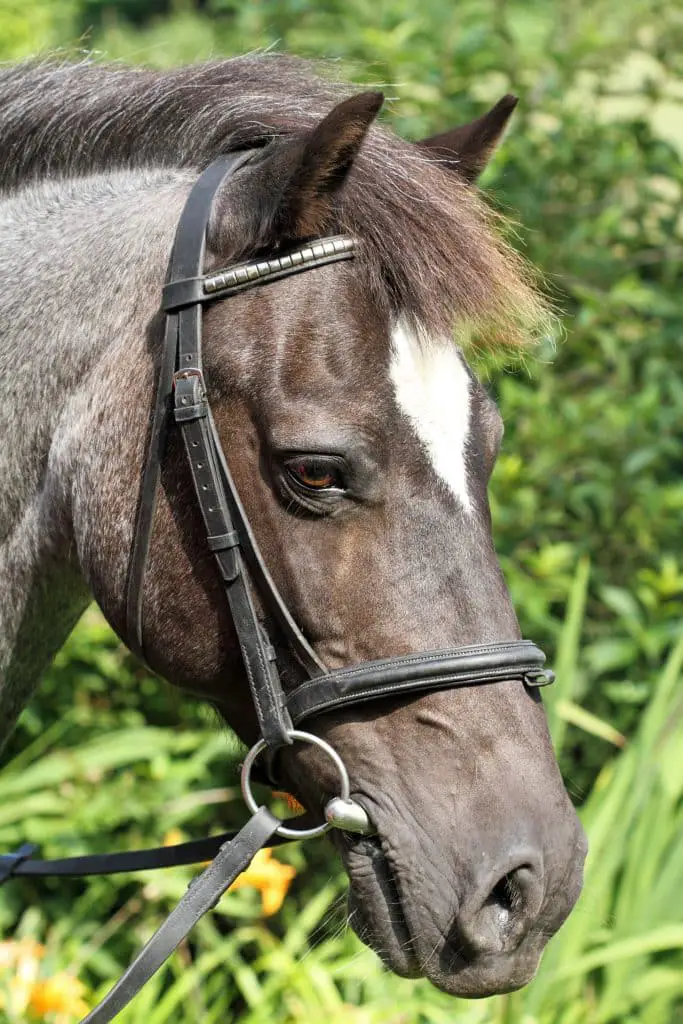
The second main class of bits is the curb bit. Curb bits are distinguished by the fact that the reins attach to an intermediate leverage piece that is then attached to the mouthpiece. This means the horse will feel a larger amount of pressure on the mouth than the rider is providing on the reins. There is a curb or chin strap attached to the mouthpiece, which serves to stabilize the shanks to which the reins are attached. You can see an example below:
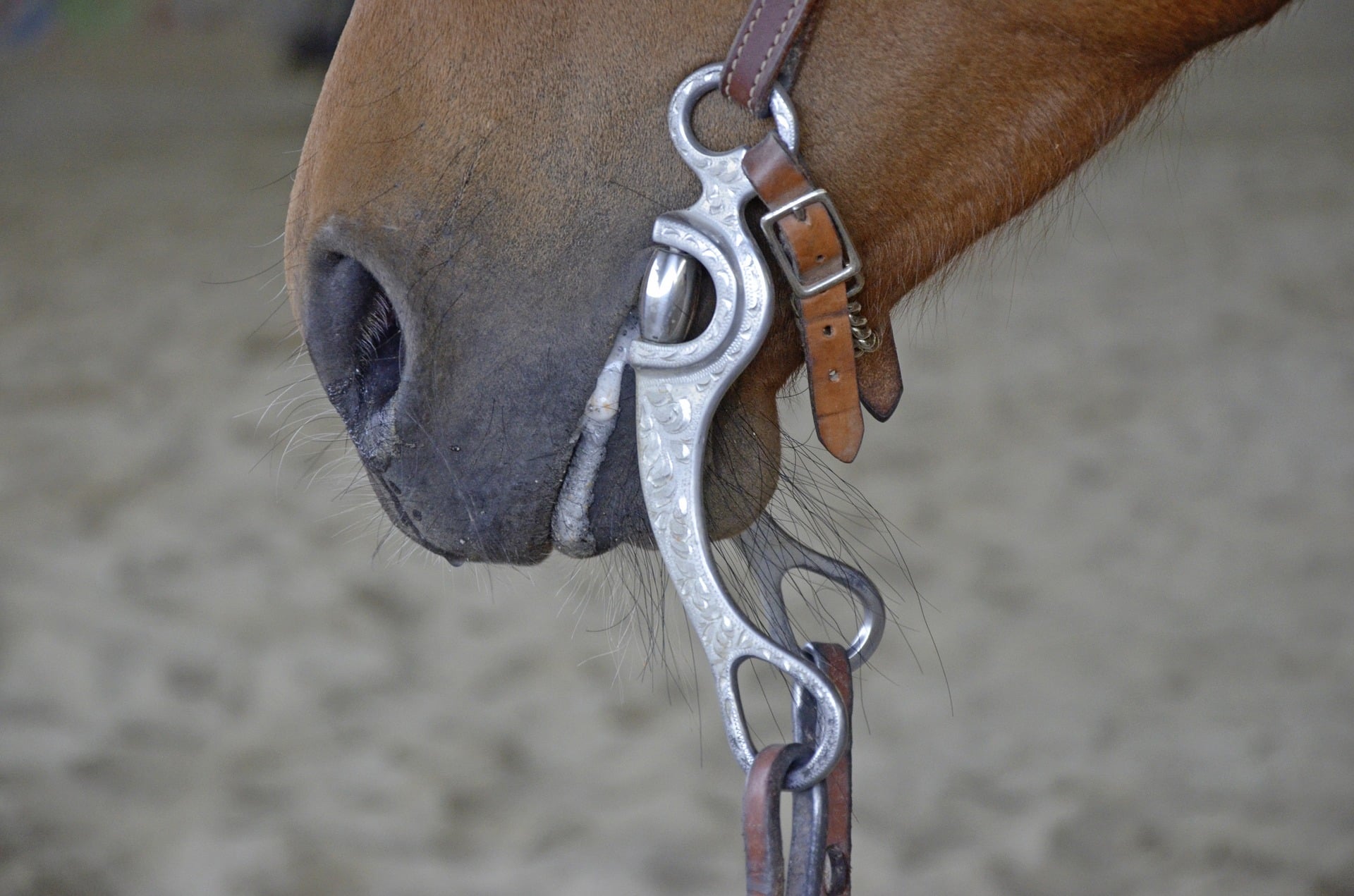
Variations on the snaffle bit
Snaffle bits have a few possible variations. First, they may be broken in one or several places. Second, the cheek pieces, or the rings to which the reins attach can vary in size. Finally the circumference or thickness of the bit can vary in size.
The basic rule of snaffle bits is that the larger the surface that’s in contact with the horse, the less bite the bit has or the gentler it is This makes sense as the pressure exerted by the rider is distributed across a greater surface area.
So this can be broken down with the following design criteria:
- The larger the cheek pieces, the gentler the bit.
- The thicker the diameter of the mouthpieces, the gentler it is.
Variations on the curb bit
Curb bits generally have a straight bar mouthpiece or sometimes include a port – which is usually a little U-shaped curve like the one on the right that provides pressure support across the tongue. If it’s large enough bit, it can also touch the roof of the horse’s mouth and act as a signalling mechanism prior to when the horse feels the true onset of pressure.
The leverage of the curb bit comes from the length of the shanks. The longer they are, the more leverage the rider has because the movement is greater.
Imagine there is a stick on a table with about an inch of it sticking out off the table. Now imagine trying to flip that stick as fast as you can by smacking it on the end. You aren’t going to get very good leverage because you only have like an inch to work with.
Now imagine that same stick. But instead of only an inch being off the table now you have like almost half the stick off the table. If you hit the very end of the stick, chances are it’s going to go a lot faster. And that’s because of the increased leverage.
The principle here is the same – longer shank, more leverage.
Some shanks are able to swivel from the joint where they connect at the horse’s mouth. Some of the force from the reins is lost through this movement and therefore, this makes it easier on the horse’s mouth. Shanks that are fixed in place have the most leverage.
So all this can be broken down to the following design criteria:
- The longer the shanks, the greater the leverage.
- A larger post increases the level of interaction.
- The stiffer the shanks, the greater the leverage. Fixed shanks are the toughest.
Materials used for different types of bits
Bits can be made from a variety of different materials. The material that you choose is important because your horse will like certain ones more than others so he or she will be more willing to accept certain types of bits.
There is a bit of a debate as to how important the type of material is in terms of promoting salivation. Generally, materials that oxidize and rust will promote salivation due to their taste, which horses may prefer. However, the skill of the rider’s hands on the horse should also promote relaxation of the jaw. The horse will naturally then chew at the bit and salivate regardless of the material.
Be aware that certain materials are unhealthy for your horses, so you want to stay away from them. For example, nickel in bits have been known to cause allergic reactions and mouth sores.
I’ve created this quick list for you so you can choose which type will be right for you!
Mild steel or “sweet iron”
Mild steel is cold rolled steel or carbon steel, which means that through working it at high temperatures, it has become hardened. It also has the property that it oxidizes and is thus known as “sweet iron” because the rustiness makes it taste sweet to the horse.
Horses generally develop a taste for these bits and will accept them more willingly. Also the rust has that acidity that promotes salivation and chewing. This will limit friction and keep your horse’s mouth lubricated and healthy.
These bits are durable and are usually priced in the mid range. They are preferentially used in Western riding because the fact that they oxidize makes them loose their lustre. Lustre is more popular in English riding, so oxidization can be undesirable.
Copper, copper alloys or copper inlays
Bits can either be made entirely of copper or a copper alloy, or they can include copper inlays. The main purpose of copper is to promote salivation which lubricates to prevent sores.
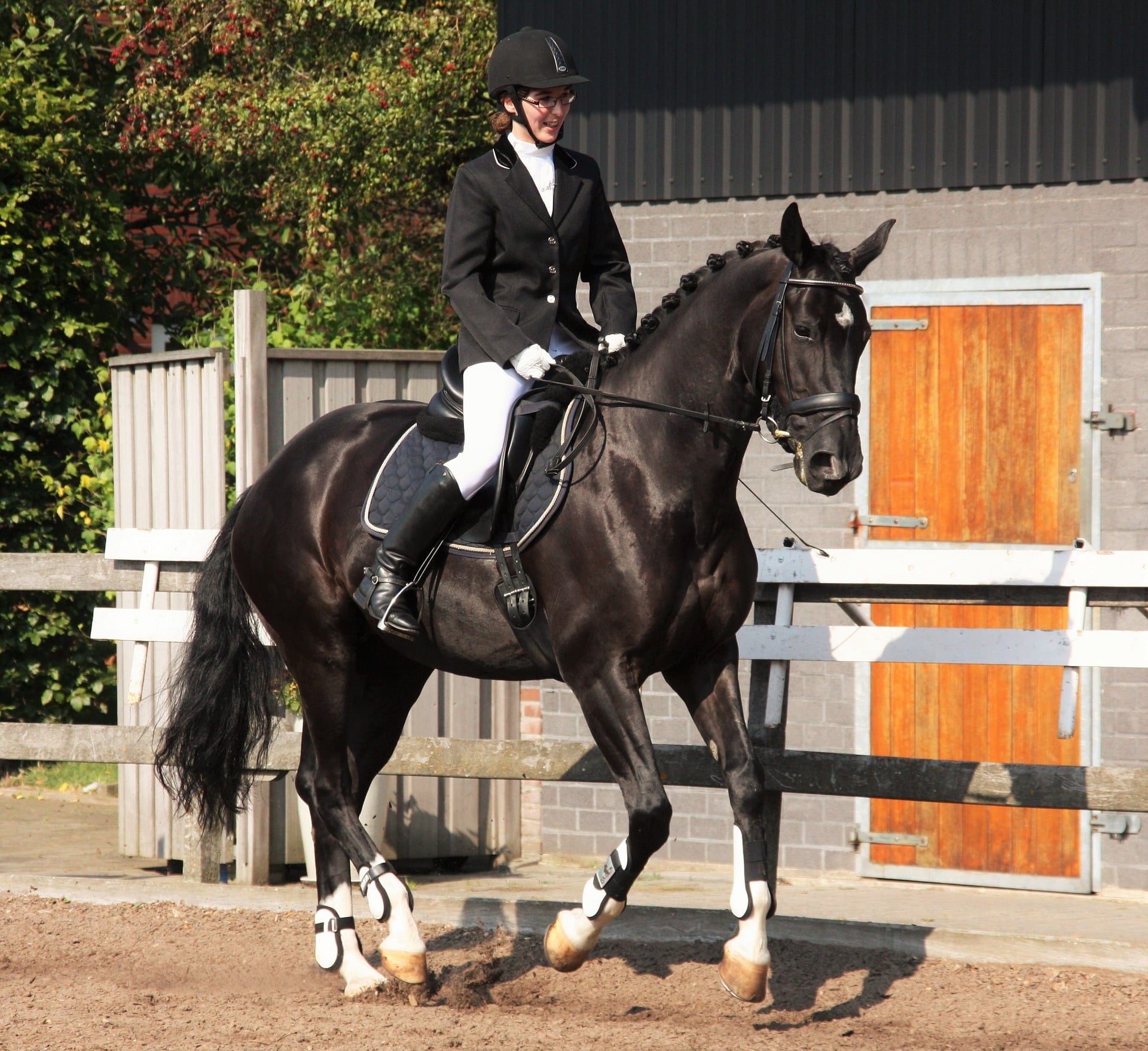
Pure copper bits generally are mid- to low-range in price and have relatively low durability compared to steel. This means that pure copper bits are rarely used. Instead, copper alloys or copper inlays on steel bits are preferred.
Copper alloys are mid- to high-range in price and have fair durability. They are made with silicon or zinc and have a golden colour to them which makes them popular for use as dressage bits.
Copper inlays are mid-range in price and have good durability. These are very popular as they have the strength of steel but the taste of copper.
Stainless steel
Stainless steel is great for looking good and staying shiny. These bits are often used for English riding, as they are easy to keep clean and looking nice.
These bits are mid-range in price and are extremely durable. They do not, however promote any lubrication. This means that some horses can get sores from them due to friction against their mouths. Thus copper inlays or other metals are often added in order to increase salivation.
Rubber, plastics and nylons
These are usually the thicker and more flexible types of horse bits, although you can get them with a steel core to increase stiffness. This is for horses who are currently coping with injuries or dental issues. The thickness reduces the bite of the bit and makes it softer and gentler on the mouth.
The plastics and nylons have a sweet taste and promote salivation. These features promote chewing which will activate the salivary glands and keep your horse’s mouth moist and healthy. You can also use a latex wrap on any regular bit to transform it into a rubber bit.
These bits are usually cheaper but they don’t last very long because many horses can chew through them quickly. They are not suitable as for long term use but rather for temporary injuries.
Aluminum and Nickel options
Aluminum is still sometimes available because it’s very light weight. But beware: you don’t want this of your horse. It results in a very dry mouth, which is not healthy.
Nickel combinations with steel, zinc and brass are fairly common. Check out this chart form Horse Journal for a better breakdown of nickel combinations of you are interested. I don’t like going into them because of incidences of allergic reactions. Better safe than sorry!
What does this mean for you?
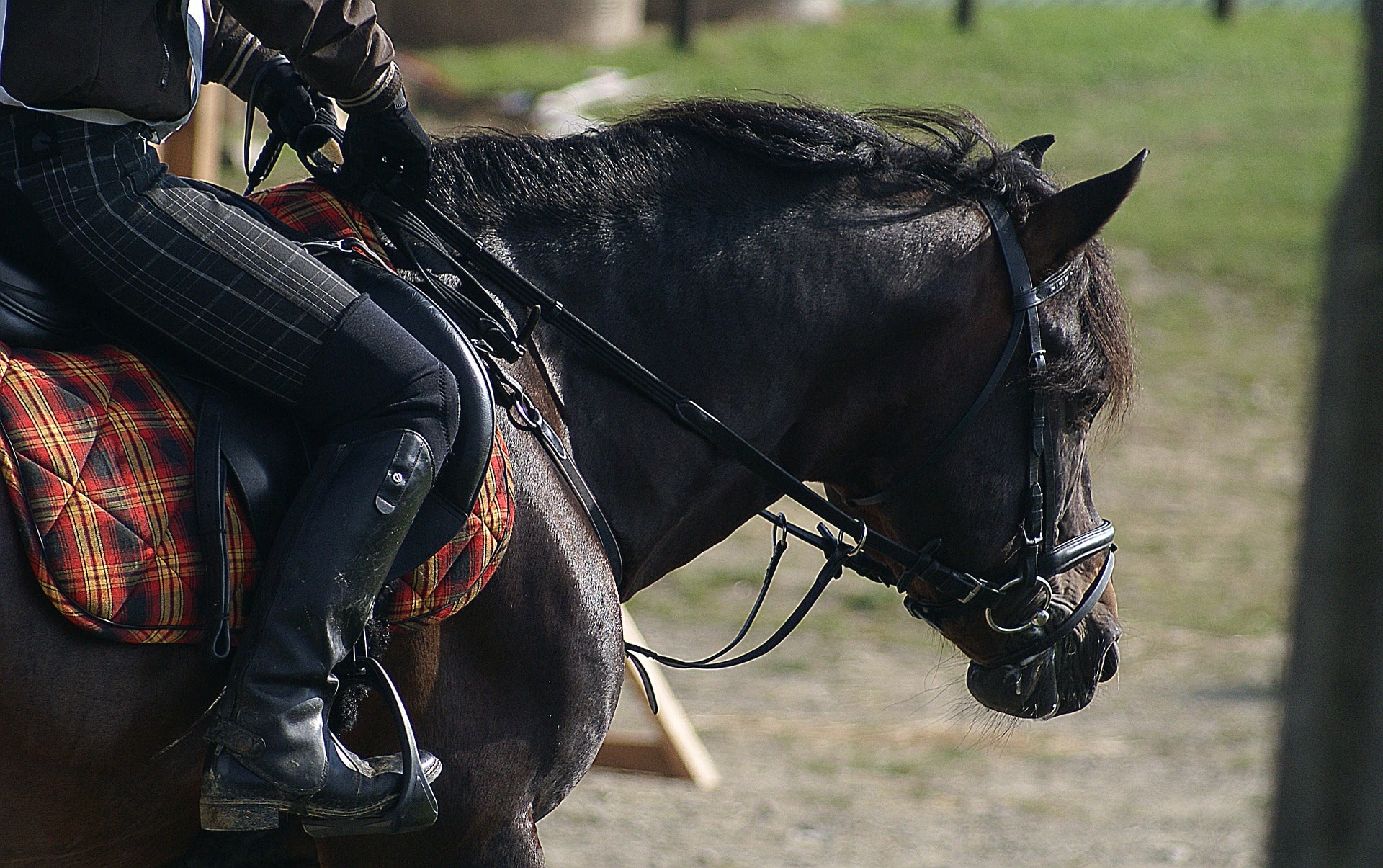
You may want to start with a snaffle bit if you’ve got a younger horse or a horse that’s in training. Snaffle bits have been used for riding for ages, are still widely used and work very well. I would always have this bit style as a default and then re-evaluate if there are problems down the line.
Switching to a curb bit is usually done with older, more experienced horses. It’s important to think twice about using them with younger horses. Always ask yourself whether you are trying to achieve a quick fix to a problem in your horse’s training by getting a curb bit rather than putting in the extra work.
If you are – well I can say with confidence that this is unlikely to work. Instead it will create more problems and frustration down the line. You want to develop trust with your horse and a line of communication through the bit – you don’t want to simply force submission through pain.
Then again, you also don’t want to be controlled by your horse, being pulled around and risking your safety for years on end. So it really comes down to a compromise at the end of the day.
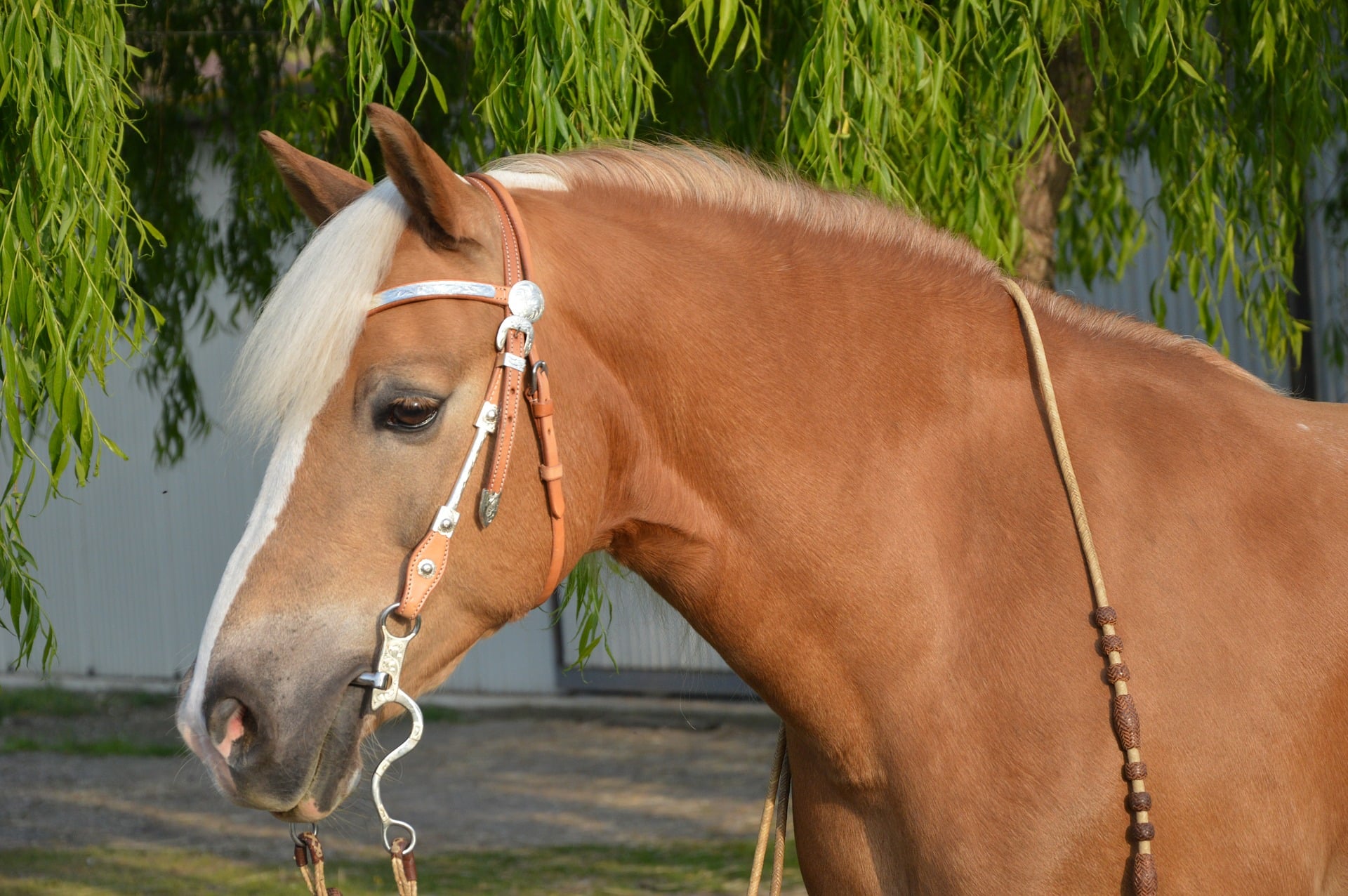
Trainer Jeff Spencer states here, perhaps with come controversy, that just because you’ve chosen a curb bit doesn’t mean you’ve failed horribly or are being cruel to your horse. Many cowboys like curb bits because they only have one hand with which to try and control their horse’s movements.
I would say, however, that it is extremely important to use a material that promotes salivation. The extreme bite on your horse’s mouth can cause damage if there isn’t enough lubrication. This is also another reason why sweet iron bits are popular in Western riding.
Go slow and be gentle!
If you do switch to a curb bit, I would do it gradually and give your horse a chance to get used to it. Start very light because getting harsh quickly will be jarring for your horse and could result in a bad reaction and compromise your safety. A good way to do this is to start with a softer leather curb strap and shorter shanks.
I really hope this post was helpful and will serve as a quick guide for you next time you need a refresher on the different types of bits. If you have any questions about bits or additions from your own experience, please don’t hesitate to comment below!
You could also have a read of my guide on how to choose a bit for your horse in three steps, for more information!
Happy riding 🙂
Like this Post? Share it on Pinterest. Follow me on Pinterest.
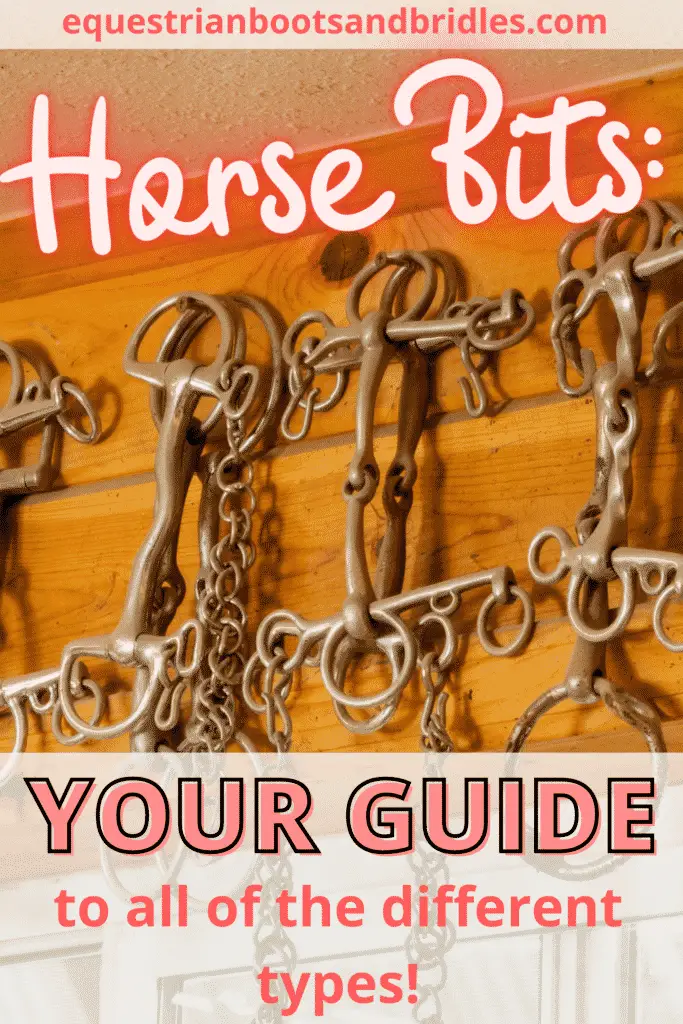
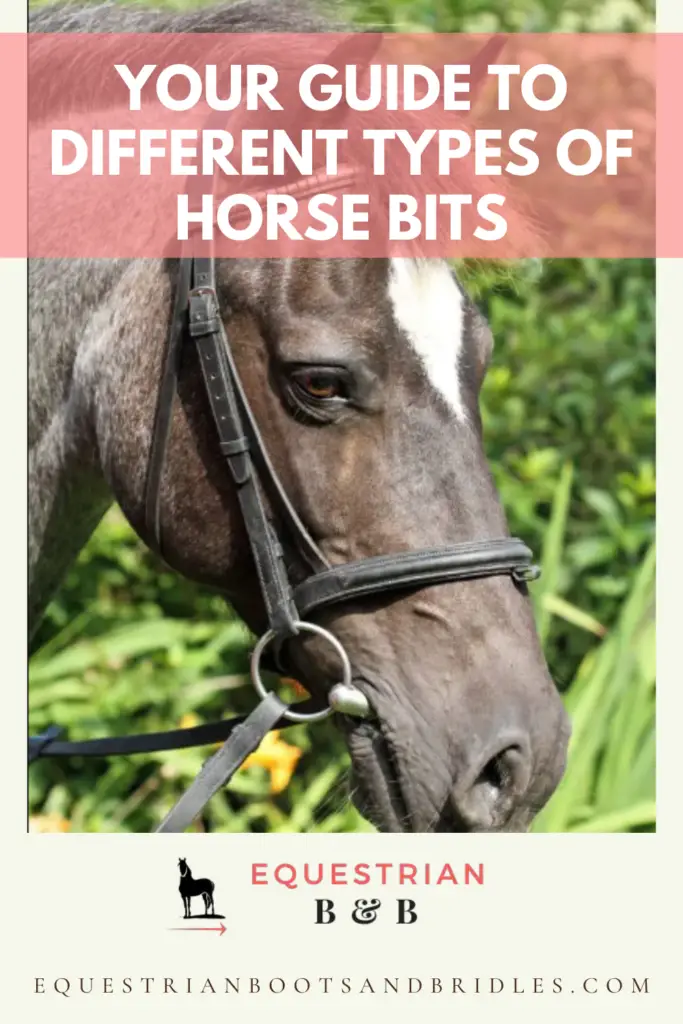


Hi Martina,
Wow, what a great article, you have given such important information about horse bits, I really liked it!
I was born with horses and grew up with them, this creature is absolutely beautiful, so intelligent and sensitive. I personally think that we must be careful with the horse mouth and use the right material, it is very easy to desensitize the horse which can lead the horse not to respond properly to our demands. I personally prefer the snaffle bit, it is more gentle for the horse and if use it correctly then your friend will be very happy! I use to ride my horse with a rope halter, and our communication was absolutely awesome but it is not recommended for beginners:)
What would you recommend the most, the snaffle or the curb bit?
Thank you for this excellent post!
Hey Daniella!
Thanks for your feedback, I’m really happy that you enjoyed my post. I totally agree, horses are most definitely the best. I agree with you as well – I prefer materials that induce salivation so that you completely avoid any risk of sores from a dry mouth. That sounds like a lot of fun and like you and your horse were very well connected! I actually rode a few times without a bridle or roped halter, it was amazing although a little nerve wracking at first. But we were in an arena and I had been riding my horse at the time for 4 years so he knew exactly what to do just from my legs 🙂
I would also recommend snaffle as a default. Definitely. I think that the curb bit should only be used in special circumstances. If all other avenues have been exhausted and safety is a big concern. Or if the rider is very experienced and doesn’t have the ability to exert a lot of force but needs exceptional control such as in one handed rodeo style riding.
Thanks for your comment 🙂
Martina
I was initially interested in reading your post as I had just been on Chincoteague and Assateague Islands in Virginia and got to see the Chincoteague ponies on a day cruise. I never heard of horse bits before and think you did a great job of explaining them. This post should be very interesting for equestrians.
Hey Kevin!
That’s great to hear – I’m happy you liked my post.
what would advise if you have a older horse that i use a short shank snaffle as that is what he was use to but seems to have a mind of his own and at times just does what he wants.
Hi Phil,
If you feel like you need more control then you could try a curb bit but you have to be more gentle with the horse so that you don’t irritate his mouth. Sometimes if there’s too much pressure for too long, then the horse will just start ignoring signals and force it whichever way he wants to go. Going to a curb bit might be what he needs to re-sensitize but you have to respect that it’s more intense for him and handle the reins appropriately.
Hope that helps!
Martina
Hi Martina. Thanks for this great information about bits. I’m wondering what kind of bits are typically used for gaited horses. I have a Tennessee Walker that I acquired at age 12. He has only been riden with a hackamore. He’s a very forward moving horse and I don’t always feel I have the control I need with the hackamore. What would you suggest? I think he has never had a bit in his mouth.
Thanks … Elaine
Excellent information about bits and snaffles. Thanks a lot!